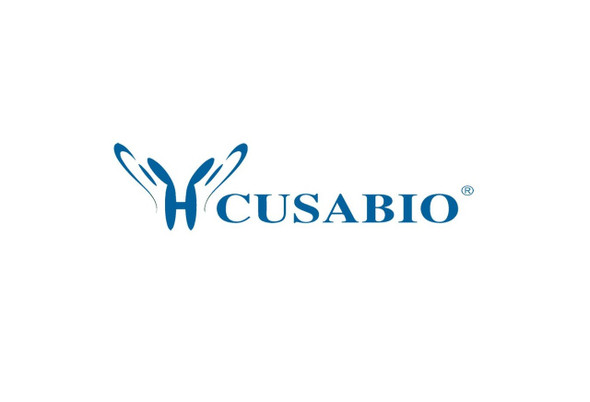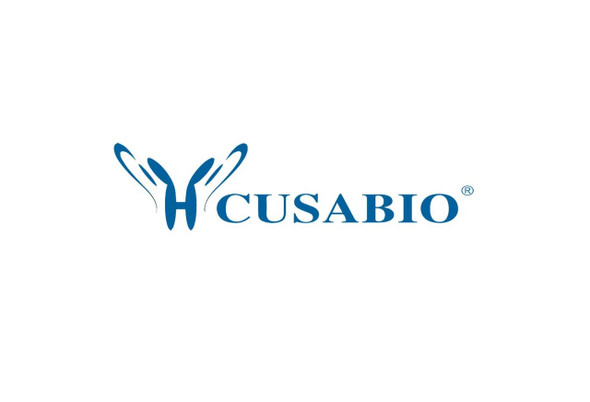Cusabio Human Recombinants
Recombinant Human Asporin (ASPN) | CSB-EP002230HU
- SKU:
- CSB-EP002230HU
- Availability:
- 3 - 7 Working Days
Description
Recombinant Human Asporin (ASPN) | CSB-EP002230HU | Cusabio
Alternative Name(s): Periodontal ligament-associated protein 1 Short name:PLAP-1
Gene Names: ASPN
Research Areas: Signal Transduction
Organism: Homo sapiens (Human)
AA Sequence: DMEDTDDDDDDDDDDDDDDEDNSLFPTREPRSHFFPFDLFPMCPFGCQCYSRVVHCSDLGLTSVPTNIPFDTRMLDLQNNKIKEIKENDFKGLTSLYGLILNNNKLTKIHPKAFLTTKKLRRLYLSHNQLSEIPLNLPKSLAELRIHENKVKKIQKDTFKGMNALHVLEMSANPLDNNGIEPGAFEGVTVFHIRIAEAKLTSVPKGLPPTLLELHLDYNKISTVELEDFKRYKELQRLGLGNNKITDIENGSLANIPRVREIHLENNKLKKIPSGLPELKYLQIIFLHSNSIARVGVNDFCPTVPKMKKSLYSAISLFNNPVKYWEMQPATFRCVLSRMSVQLGNFGM
Source: E.coli
Tag Info: N-terminal 6xHis-SUMO-tagged
Expression Region: 33-380aa
Sequence Info: Full Length of Mature Protein
MW: 55.7 kDa
Purity: Greater than 90% as determined by SDS-PAGE.
Relevance: Negatively regulates periodontal ligament (PDL) differentiation and mineralization to ensure that the PDL is not ossified and to maintain homeostasis of the tooth-supporting system. Inhibits BMP2-induced cytodifferentiation of PDL cells by preventing its binding to BMPR1B/BMP type-1B receptor, resulting in inhibition of BMP-dependent activation of SMAD proteins (By similarity). Critical regulator of TGF-beta in articular cartilage and plays an essential role in cartilage homeostasis and osteoarthritis (OA) pathogenesis. Negatively regulates chondrogenesis in the articular cartilage by blocking the TGF-beta/receptor interaction on the cell surface and inhibiting the canonical TGF-beta/Smad signal. Binds calcium and plays a role in osteoblast-driven collagen biomineralization activity.
Reference: "Mechanisms for asporin function and regulation in articular cartilage."Nakajima M., Kizawa H., Saitoh M., Kou I., Miyazono K., Ikegawa S.J. Biol. Chem. 282:32185-32192(2007).
Storage: The shelf life is related to many factors, storage state, buffer ingredients, storage temperature and the stability of the protein itself. Generally, the shelf life of liquid form is 6 months at -20?/-80?. The shelf life of lyophilized form is 12 months at -20?/-80?.
Notes: Repeated freezing and thawing is not recommended. Store working aliquots at 4? for up to one week.
Function: Negatively regulates periodontal ligament (PDL) differentiation and mineralization to ensure that the PDL is not ossified and to maintain homeostasis of the tooth-supporting system. Inhibits BMP2-induced cytodifferentiation of PDL cells by preventing its binding to BMPR1B/BMP type-1B receptor, resulting in inhibition of BMP-dependent activation of SMAD proteins (By similarity). Critical regulator of TGF-beta in articular cartilage and plays an essential role in cartilage homeostasis and osteoarthritis (OA) pathogenesis. Negatively regulates chondrogenesis in the articular cartilage by blocking the TGF-beta/receptor interaction on the cell surface and inhibiting the canonical TGF-beta/Smad signal. Binds calcium and plays a role in osteoblast-driven collagen biomineralization activity.
Involvement in disease: Osteoarthritis 3 (OS3); Intervertebral disc disease (IDD)
Subcellular Location: Secreted, extracellular space, extracellular matrix
Protein Families: Small leucine-rich proteoglycan (SLRP) family, SLRP class I subfamily
Tissue Specificity: Higher levels in osteoarthritic articular cartilage, aorta, uterus. Moderate expression in small intestine, heart, liver, bladder, ovary, stomach, and in the adrenal, thyroid, and mammary glands. Low expression in trachea, bone marrow, and lung. Colocalizes with TGFB1 in chondrocytes within osteoarthritic (OA) lesions of articular cartilage.
Paythway:
Form: Liquid or Lyophilized powder
Buffer: If the delivery form is liquid, the default storage buffer is Tris/PBS-based buffer, 5%-50% glycerol. If the delivery form is lyophilized powder, the buffer before lyophilization is Tris/PBS-based buffer, 6% Trehalose, pH 8.0.
Reconstitution: We recommend that this vial be briefly centrifuged prior to opening to bring the contents to the bottom. Please reconstitute protein in deionized sterile water to a concentration of 0.1-1.0 mg/mL.We recommend to add 5-50% of glycerol (final concentration) and aliquot for long-term storage at -20?/-80?. Our default final concentration of glycerol is 50%. Customers could use it as reference.
Uniprot ID: Q9BXN1
HGNC Database Link: HGNC
UniGene Database Link: UniGene
KEGG Database Link: KEGG
STRING Database Link: STRING
OMIM Database Link: OMIM










